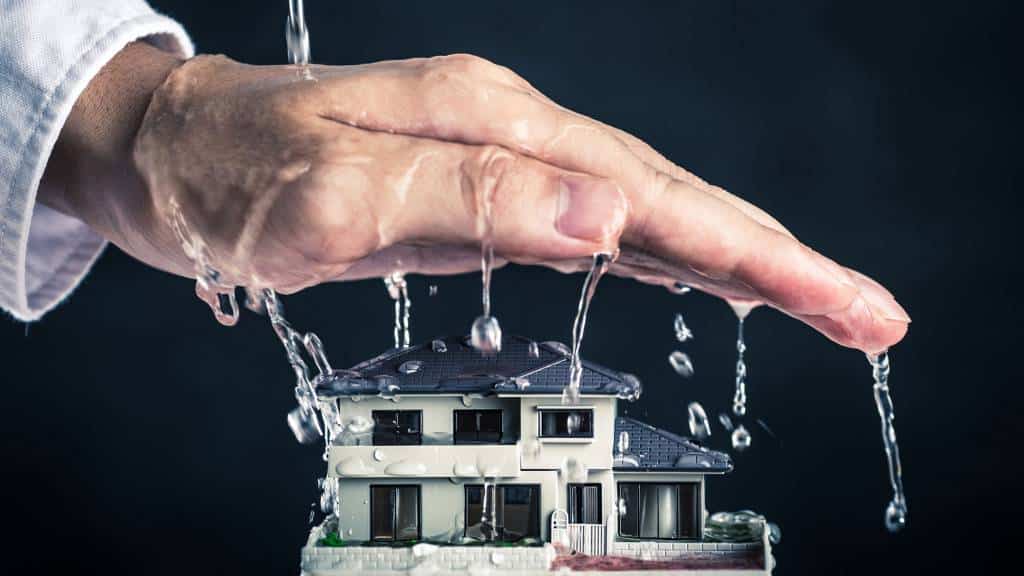Preventative Measures for the Six Most Common Causes of Water Leaks in Homes
Preventative Measures for the Six Most Common Causes of Water Leaks in Homes
Blog Article
What're your opinions with regards to How Fast Water Damage Can Ruin Your Home?

Leakages not only trigger waste of water but can likewise trigger unneeded damages to your home and advertise undesirable natural development. Unfortunately, water leakages may go undetected given that the majority of the pipework in our home is hidden. By looking and understanding for day-to-day situations that create leakages, you can safeguard your home from future leakages and unnecessary damages. Today, we will check out six leakage triggers that may be causing your pipelines to drip.
Elbowing in origins
The majority of water leakages begin outside your home instead of inside it. If you see an unexpected decline in water pressure, say in your tap, take time to head out and analyze your yard. You might see wet spots or sinkholes in your backyard, and that might mean that tree roots are attacking water lines triggering water to permeate out. You can have your plumber look for breach, specifically if you have trees or bushes near your home.
Rusty water supply
As time passes by, your plumbing system ages and also rust such as corrosion may start gnawing the pipes. This may be the source of staining or bending on your pipes. This asks for an examination with your plumber immediately. If our plumbing system is old, think about replacing the pipelines because they go to a higher risk of deterioration than the newer designs.
Faulty Pipeline Joints
The factor at which your pipelines attach is regularly the weakest web link in the waterline. Pipeline joints can weaken in time, leading to water leaks. Regrettably, most of pipe joints are not easily visible. If you have loud pipelines that make ticking or banging sounds, particularly when the warm water is activated, your pipeline joints are possibly under a great deal of stress. It is a good idea to have your plumber check your system annually.
Immediate temperature adjustments.
Severe temperature level modifications in our pipes can create them to broaden and also acquire unexpectedly. This expansion and also contraction might trigger cracks in the pipelines, particularly if the temperature level are below freezing.
Poor Water Connectors
At times, a leakage can be created by loosened pipes and pipelines that provide your home appliances. In instance of a water connections leakage, you may observe water running directly from the supply line or puddles around your devices.
Clogged Drains
Blocked drains pipes might be annoying as well as inconveniencing, yet they can in some cases wind up creating an overflow leading to rupture pipes. Keep getting rid of any materials that may drop your drains pipes that could obstruct them to avoid such hassles.
All the above are sources of leakages but not all water leaks arise from plumbing leakages; some leaks might come from roof covering leakages. All leaks ought to be repaired immediately to avoid water damage.
Leaks not just create waste of water yet can additionally cause unneeded damages to your residence and also advertise undesirable organic growth. By recognizing and looking for daily circumstances that trigger leakages, you can secure your home from future leaks and unnecessary damage. Today, we will look at 6 leakage causes that may be causing your pipes to drip.
At times, a leak can be caused by loose hoses and pipes that supply your appliances. In case of a water connections leak, you might see water running directly from the supply line or puddles around your appliances.
How To Check For Water Leak In Your Home
How To Check for Leaks
The average household's leaks can account for nearly 10,000 gallons of water wasted every year and ten percent of homes have leaks that waste 90 gallons or more per day. Common types of leaks found in the home are worn toilet flappers, dripping faucets, and other leaking valves. These types of leaks are often easy to fix, requiring only a few tools and hardware that can pay for themselves in water savings. Fixing easily corrected household water leaks can save homeowners about 10 percent on their water bills.
To check for leaks in your home, you first need to determine whether you're wasting water and then identify the source of the leak. Here are some tips for finding leaks:
Take a look at your water usage during a colder month, such as January or February. If a family of four exceeds 12,000 gallons per month, there are serious leaks.
Check your water meter before and after a two-hour period when no water is being used. If the meter changes at all, you probably have a leak.
Identify toilet leaks by placing a drop of food coloring in the toilet tank. If any color shows up in the bowl after 10 minutes, you have a leak. (Be sure to flush immediately after the experiment to avoid staining the tank.)
Examine faucet gaskets and pipe fittings for any water on the outside of the pipe to check for surface leaks.
Undetected water leaks can happen without the home or business owner even realizing. If you suspect a water leak, but not able to find the source. It is time to contact a professional water leak detection service, The Leak Doctor.
How To Find a Water Leak In Your Home
https://www.leakdoctor.com/blog/How-To-Check-For-Water-Leak-In-Your-Home_AE197.html

As a devoted person who reads on How Fast Water Damage Can Ruin Your Home, I assumed sharing that article post was really helpful. In case you appreciated our article if you please don't forget to pass it around. Thanks a lot for going through it.
Call Today Report this page